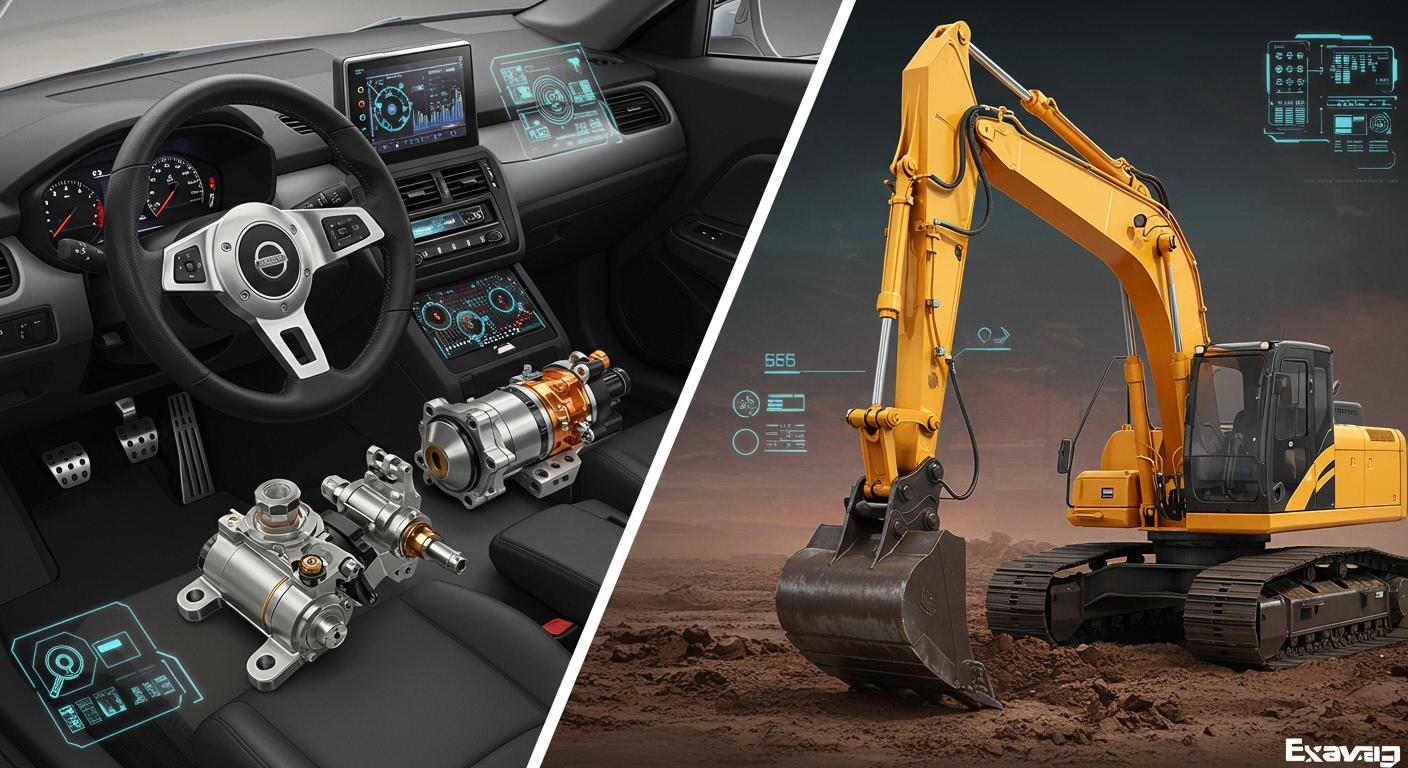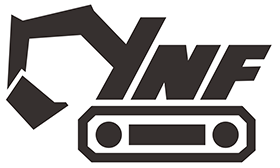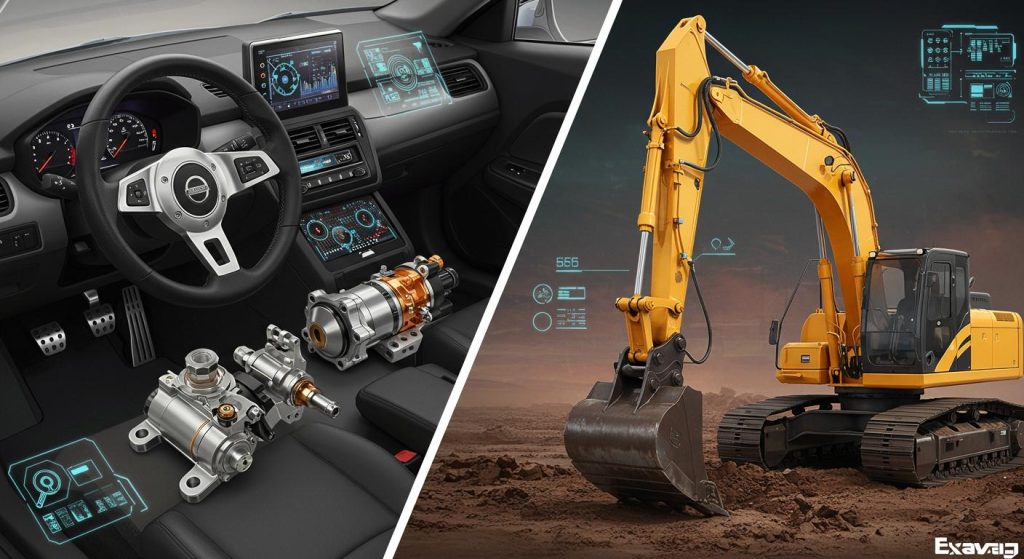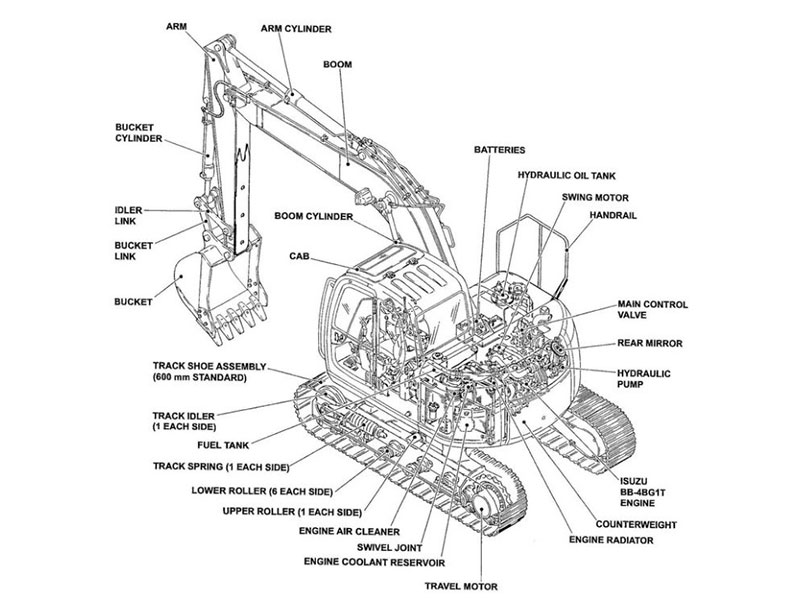
You notice a significant difference between power steering pumps excavator hydraulic pump in the way each supports its respective machine. Power steering pumps excavator hydraulic pump help you steer your car with ease, while excavator hydraulic pumps provide the necessary power for heavy equipment to lift, dig, or move substantial loads. By examining their function, design, and operation, you can understand what distinguishes power steering pumps excavator hydraulic pump from one another.
Key Takeaways
Power steering pumps help you turn cars more easily. They use hydraulic pressure to make turning smooth and simple.
Excavator hydraulic pumps change engine power into hydraulic power. This lets big machines lift, dig, and move heavy things well.
Power steering pumps work at lower pressures, about 1,200 to 1,400 psi. Excavator hydraulic pumps work at much higher pressures, up to 5,000 psi. This helps them do tough jobs.
Both pumps need regular care. You should check for leaks and keep the fluid at the right level. This helps them work well.
Picking the right pump is very important. Think about what job you need it for and where you will use it.
Function Comparison
Power Steering Pumps
Power steering pumps help you steer your car easily. They make driving safer and less tiring. When you start your car, the pump turns on with the drive belt. It makes pressure that helps the steering system work. This pressure lets you turn the wheel without much effort. You can park or drive slowly without trouble.
The pump makes pressure to help you steer.
Turning the wheel is easier for you.
Driving feels smoother because of the system.
The pump is important for power steering.
Tip: If steering feels hard or heavy, check the power steering pump.
Power steering pumps and excavator hydraulic pumps work differently. In cars, the pump only helps with steering. It does not lift or move heavy things.
Excavator Hydraulic Pump
Excavator hydraulic pumps do more in big machines. You need these pumps to dig, lift, and move heavy stuff. The pump changes engine power into hydraulic power. This power runs the whole hydraulic system. The system uses pressure and flow to move the arms, bucket, and tracks.
Pressure gives the excavator strength to break and lift.
Flow controls how fast the machine moves.
The pump keeps oil moving to power everything.
The hydraulic system is like the heart of the excavator. You use the pump to send power to all parts. The pump, valves, and cylinders work together. This lets you dig, lift, and move things exactly where you want.
Note: Excavator hydraulic pumps handle much more pressure and flow than car pumps. They are built stronger and tougher.
Excavator hydraulic pumps do more than help you steer. They give you the power to use heavy machines and finish hard jobs.
Design & Build
Power Steering Pump Design
Power steering pumps and excavator hydraulic pumps look very different. In cars, power steering pumps use a mechanical hydraulic pump. People sometimes call it a servo pump. The engine turns the pump with a V-belt. This setup helps you steer with less force. It is most helpful when you turn slowly or make sharp turns.
Here is a table that shows the main design features of power steering pumps:
Design Feature | Description |
|---|---|
Type of Pump | Mechanical hydraulic steering pump |
Drive Mechanism | Driven by engine via V-belt |
Function | Generates hydraulic pressure for easier steering |
The pump makes hydraulic pressure by moving steering fluid. This pressure helps you steer your car smoothly. Most pumps use a constant flow, positive displacement hydraulic pump. You can find two main types in cars:
Linkage assist steering
Integral power steering gear
Both types use the same kind of hydraulic pump. The pump is small and fits in the engine bay. It does not need to handle very high pressure or flow like pumps in big machines.
Tip: If you hear whining or steering feels stiff, check the pump.
Excavator Hydraulic Pump Design
Excavator hydraulic pumps are built much tougher. These pumps handle high pressure and heavy loads. The pump body uses strong cast steel or aluminum alloy. Some parts use ductile iron or special aluminum with heat treatment to make them harder.
Here is a table that shows common materials in excavator hydraulic pumps:
Component | Material Used | Additional Notes |
|---|---|---|
Pump Body | Cast steel or aluminum alloy | Heat treated for strength |
Plungers | Alloy steel | Polished, surface hardness HRC58-62 |
Valve Plate | High-wear-resistant alloy steel | Nitriding, surface hardness HV900+ |
Swash Plate | Chrome plating or nitriding | Low friction, good wear resistance |
Seals | Fluorine rubber, PTFE, polyurethane | Resist aging, heat, and oil |
Every part must be strong and resist wear. The pump uses special seals to keep oil inside and stop leaks. Bearings help the pump stay steady even after long use. The design lets the pump give strong hydraulic power and steady flow for all parts of the excavator.
Note: Excavator hydraulic pumps are much bigger and stronger than car pumps. You need them for digging, lifting, and moving heavy things.
Operation of Hydraulic Pumps
How Power Steering Pumps Work
You use power steering pumps every time you turn your car’s wheel. The pump sits near the engine and connects to it with a belt. When the engine runs, the pump spins and pushes hydraulic fluid into the steering system. This fluid creates pressure, making it easier for you to steer.
Most power steering pumps operate at pressures between 1200 and 1400 psi. The flow rate usually stays between 3 and 4 gallons per minute. Here is a table showing a typical pump’s performance:
Pump Model | Pressure (psi) | Flow Rate (GPM) |
|---|---|---|
Borgeson 800323 | 1450-1550 | 3.0-3.5 |
You get smooth and easy steering because the hydraulic system helps you. The pump does not need to handle very high pressure or heavy loads. It only supports the steering, not other parts of the car.
You feel less effort when turning the wheel.
The system works best at low speeds or when parking.
The pump uses a vane design, which is less robust than pumps in heavy machinery.
Tip: If steering feels stiff or noisy, check the fluid level or the pump.
How Excavator Hydraulic Pumps Work
Excavator hydraulic pumps work much harder than car pumps. You rely on these pumps to move arms, buckets, and tracks. The pump takes engine power and turns it into hydraulic power. This power runs through hydraulic systems, letting you dig, lift, and move heavy loads.
Excavator hydraulic pumps use piston designs. These pumps handle high pressure and tough jobs. You see them in heavy machinery like excavators and bulldozers. Here is a table comparing pump types and their robustness:
Pump Type | Robustness Under Heavy-Duty Conditions | Common Applications |
|---|---|---|
Piston Pumps | High-pressure operation, very robust | Excavators, bulldozers, construction equipment |
Vane Pumps | Less robust, lower pressure | Automotive power steering systems |
You get strong hydraulic power and steady flow. The pump sends fluid to cylinders and motors, which move the machine’s parts. Hydraulic pumps in excavators must resist wear and last a long time. You depend on them for safe and powerful operation.
You control digging, lifting, and moving with hydraulic systems.
The pump works under high pressure and heavy loads.
The system uses strong materials and seals to prevent leaks.
Note: Excavator hydraulic pumps handle much more pressure and flow than power steering pumps excavator hydraulic pump. You need this strength for heavy-duty work.
Applications of Hydraulic Pumps
Power Steering Pumps in Vehicles
You use power steering pumps when you drive cars or trucks. These pumps make steering easy, especially when you go slow or park. The pump moves hydraulic fluid through the system. This gives you the power to turn the wheel with less effort. Most new cars have hydraulic power steering systems. They help you control your car safely and with comfort.
Power steering pumps are found in cars and trucks.
The hydraulic system helps you steer at low speeds or when stopped.
Hydraulic power steering is the most common type in vehicles now.
If you want a good power steering pump, you can pick YNF Machinery. They sell pumps that keep your steering smooth and safe.
Tip: Check your hydraulic fluid often to keep your power steering working well.
Excavator Hydraulic Pump in Heavy Machinery
You see excavator hydraulic pumps working hard at building sites and mines. These pumps give excavators the strength to lift, dig, and move heavy things. The pump uses engine power and turns it into hydraulic force. This runs the whole machine. You need this pump for tough jobs every day.
Here is a table showing where excavator hydraulic pumps are used:
Application Field | Description |
|---|---|
Construction | Lifting and moving heavy materials. |
Mining | Digging and transporting materials. |
You use hydraulic pumps in construction for moving water, breaking things down, digging, and handling materials. In mining, you need them to move thick mud and waste. The hydraulic system lets you control every part of the excavator with strength and accuracy.
If you need a strong hydraulic pump for your excavator, YNF Machinery has good choices for heavy machines.
Note: Picking the right hydraulic pump helps you finish hard jobs faster and safer.
Power Steering Pumps vs Excavator Hydraulic Pump: Key Differences

Comparison Table
You might wonder how power steering pumps and excavator hydraulic pumps are different. Each pump works in its own way. They handle different jobs and are used in different places. The table below helps you see the differences fast:
Feature | Power Steering Pump | Excavator Hydraulic Pump |
|---|---|---|
Main Function | Makes steering easy in vehicles | Powers digging, lifting, and moving in heavy machinery |
Pressure Capability | Lower (around 1,200-1,400 psi) | Much higher (up to 5,000 psi) |
Control Mechanism | Electronic controls for steering precision | Load sensing for efficiency and advanced control |
Size and Build | Small, fits in engine bay | Large, built for strength and durability |
Variable Displacement | Uses variable stroke technology | Advanced variable displacement with torque limiting |
Common Failure Modes | Oil contamination, pressure spikes, blocked inlet, over pressurization | Low hydraulic pressure, worn-out components, leaks, blocked filters, air in system |
Safety Considerations | Check for leaks, inspect connections, monitor temperature | De-energize before maintenance, install relief valves, wear protective gear |
Regulatory Standards | ISO, ANSI, CEN, NFPA | ISO, ANSI, CEN, NFPA |
Typical Application | Cars, trucks | Excavators, bulldozers, construction equipment |
Tip: Always look for leaks and loose parts before using your hydraulic pump. This keeps you safe and helps your pump last longer.
Quick List of Key Differences
Power steering pumps help you steer your car easily. Excavator hydraulic pumps give machines the power to lift and dig.
Power steering pumps work at lower pressure. Excavator hydraulic pumps handle much higher pressure and harder jobs.
You find power steering pumps in cars and trucks. Excavator hydraulic pumps are used in big machines like excavators and bulldozers.
Power steering pumps use electronic controls for smooth steering. Excavator hydraulic pumps use load sensing for better control.
You should follow safety steps for both pumps. Always check for leaks, wear safety gear, and turn off the system before fixing it.
Both pumps must meet rules from groups like ISO and ANSI. These rules help keep you safe and make sure pumps work well.
Common Failure Modes
Each pump can have its own problems. Here are some things to watch out for:
Oil contamination can hurt pump parts.
Pressure spikes may break the pump.
Blocked inlets stop fluid from moving.
Too much pressure can crack the pump case.
Low hydraulic pressure makes the pump weak.
Worn-out parts make the pump work badly.
Leaks cause loss of pressure.
Blocked filters slow down the pump.
Air in the system makes the pump work poorly.
Safety Tips
You need to be careful when working with hydraulic systems. Here are some steps to follow:
Look for leaks or loose parts before starting.
Make sure the system is off and pressure is gone before repairs.
Use pressure relief valves to stop too much pressure.
Keep up with regular maintenance.
Wear gloves and goggles when working with hydraulic pumps.
Watch the temperature to stop overheating.
Mount the pump tightly to stop shaking.
Get training before using hydraulic pumps.
Regulatory Standards
You must follow rules from groups like ISO, ANSI, CEN, and NFPA. These rules cover how pumps are made, tested, and used safely.
Technology Advancements
Both pumps now have new features. Power steering pumps use more electronic controls for better steering. Excavator hydraulic pumps use advanced load sensing and variable displacement for better control and efficiency.
Note: If you want a good hydraulic pump for your machine or car, you can pick YNF Machinery. Their pumps meet high standards and help you work safely and well.
You now know the main difference between hydraulic motor and hydraulic pump. Hydraulic motors turn hydraulic power into movement. Pumps make hydraulic power by moving fluid.
Power steering pumps make it easy to steer cars. Excavator hydraulic pumps help machines dig and lift heavy things. Power steering pumps use less pressure and fit in cars. Excavator hydraulic pumps work with high pressure in big machines.
If you want to pick a pump, remember these tips:
Use piston pumps for excavators because they last longer.
Think about what job the pump will do and where you need it.
Learn about gear, vane, and piston pumps before you choose.
YNF Machinery sells good pumps for cars and heavy machines.
FAQ
What is the main job of a power steering pump?
You use a power steering pump to make steering your car easier. The pump creates pressure that helps you turn the wheel with less effort. This makes driving safer and more comfortable.
Why do excavators need special hydraulic pumps?
You need special hydraulic pumps in excavators because these machines lift, dig, and move heavy loads. The pumps must handle high pressure and work for long hours without failing.
Can you use a car power steering pump in an excavator?
You cannot use a car power steering pump in an excavator. Car pumps are too small and weak for heavy-duty work. Excavators need pumps that can handle much higher pressure and flow.
What are the similarities between hydraulic motors and hydraulic pumps?
You find that both hydraulic motors and hydraulic pumps use fluid power to move or create force. They share similar parts and both play important roles in hydraulic systems.
Where can you buy reliable hydraulic pumps for cars or excavators?
You can buy reliable hydraulic pumps from YNF Machinery. They offer pumps for both cars and heavy machines. You get quality products and helpful support.





